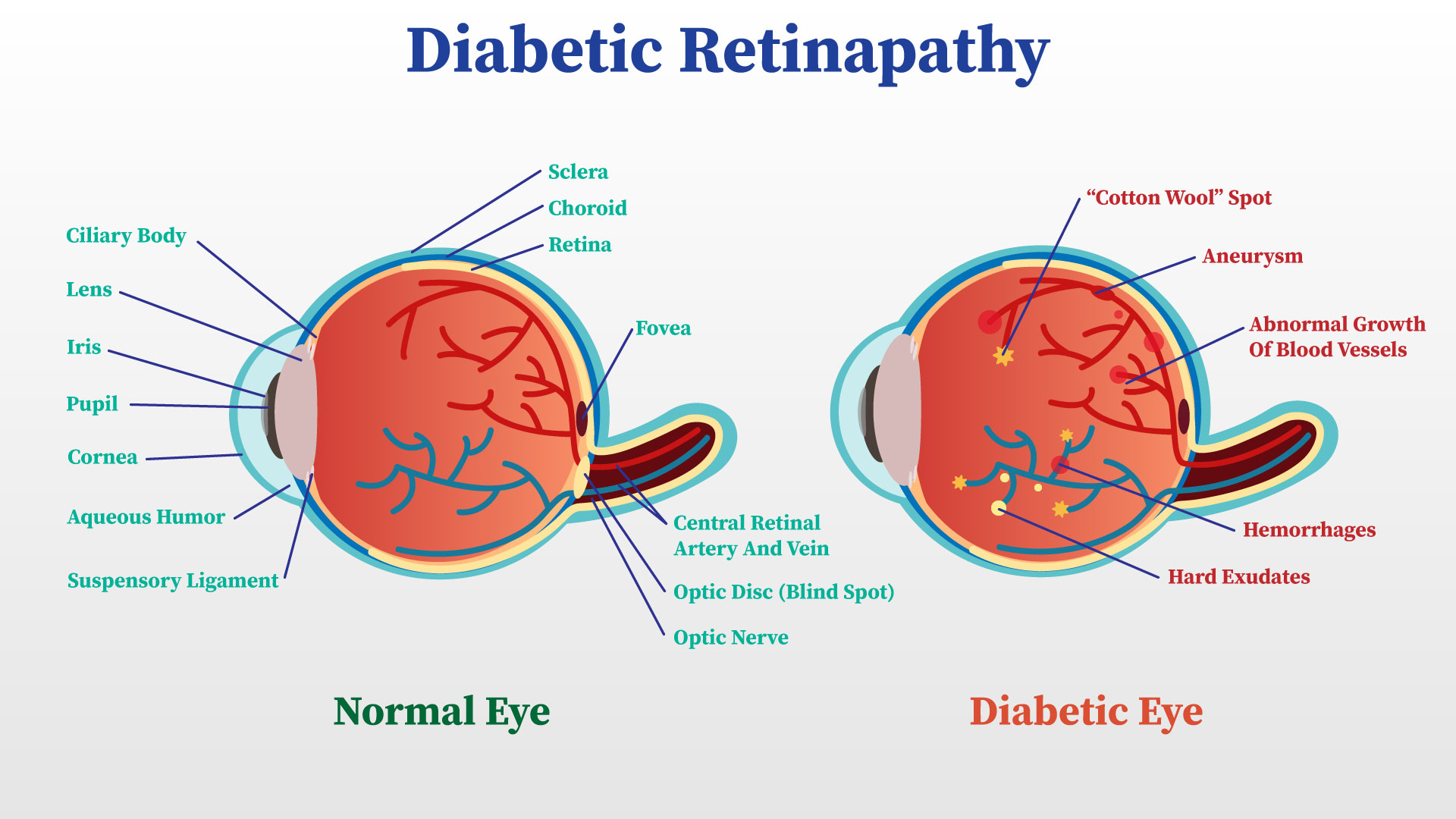Diabetic Retinal Disease and Phases of Diabetic Retinopathy

Diabetes is a widespread chronic condition, and some varieties of diabetes can be inherited. It is evident that diabetes is prevalent in many families. There are already more than 300 million diabetics globally. Diabetes affects 3.2 million Thai adults, or 6.4% of the adult population, and the number of sufferers continues to rise in all countries throughout the globe.
Diabetes is caused by prolonged elevated blood sugar levels in the body. This is caused by either insufficient insulin production by the pancreas or improper insulin response by the body's cells. Either of these conditions prevents the body from using blood sugar. If the blood sugar level is elevated for an extended period of time, it can cause vascular dysfunction that affects several organs, including the eyes.
Diabetic Retinopathy is a diabetic condition that can lead to visual loss or blindness. It is caused by sustained high blood sugar levels that damage retinal blood vessels. Depending on the severity of the disease, there are two main stages of diabetic retinopathy.
-
Non-proliferative Diabetic Retinopathy (NPDR) - This is a time during which the walls of the retinal blood vessels weaken, resulting in an aneurysm that can cause blood or fluid to flow into the retina, causing retinal edema.
-
2. Proliferative Diabetic Retinopathy (PDR) - It is a condition in which blood arteries get so blocked that regular blood flow is compromised. The blood supply to the retina is so abundant that new blood vessels are generated to replace the old ones. These newly produced blood vessels may not mature adequately, resulting in vitreous hemorrhage and fibrosis, which cause fibrous traction and result in retinal detachment. In addition, if new blood vessels form and restrict the outflow of aqueous humor, eye pressure rises, the optic nerve is damaged, and Neovascular Glaucoma develops.
In the early stages of diabetic retinopathy, symptoms and vision abnormalities may not be present. This renders the patient oblivious to the need for an eye exam, and he or she neglects to obtain one until the onset of diabetes.
-
The following are possible symptoms:
-
Notice floating specks or cobweb-like black lines
-
View distorted pictures
-
Vision impairment, hazy vision and unsteady vision
-
Notice colors appear faded
-
View some dark areas in field of vision
-
Loss of sight

Importantly, even in extreme phases, there may be no aberrant symptoms in some patients. Therefore, I would advise those with diabetes or who have a diabetic family member to avoid complacency. Even if there are no odd symptoms, you should obtain an eye exam to screen for diabetic retinopathy at least once a year. If left untreated, diabetic retinopathy can cause vision loss to the point of permanent blindness. The physician was incapable of restoring vision. Nevertheless, the retina is a delicate organ. Consequently, injured or defunct retinal photoreceptor cells cannot be repaired in any way.
References:
Pimolrat, เบาหวานขึ้นตา ดูแลให้ดีก่อนสูญเสียการมองเห็น, Diseases & Treatments, Bangkok Hospital, 2022, https://www.bangkokhospital.com/content/diabetic-retinopathy, (accessed 15 December 2022)
Share this article
More Articles
Discover more insights on health care and medical tourism.

What Is Hand Tremor? Understanding the Causes and the Right Ways to Treat It
Hand tremors are a common issue that many people experience in daily life—whether holding a cup of coffee, writing, or using a mobile phone. Noticing your hands shaking can be worrying, but in reality, tremors vary widely in severity and can arise from many different causes, ranging from minor, temporary issues to medical conditions that require proper treatment. This article will help you understand what hand tremors are, the underlying causes, and the correct treatment approaches, so you can take care of your health confidently and effectively.

Assisted Reproductive Technology (IVF / ICSI)
Starting a family is one of life’s most meaningful milestones, yet some couples may require additional support through modern reproductive technologies such as IVF or ICSI. These methods significantly enhance the chances of achieving a safe and successful pregnancy. This guide provides a clear overview of everything you need to know before beginning treatment—from required documents and pre-treatment preparation for both men and women, to each step of the IVF/ICSI process and the timeline involved. With this information, couples can approach their fertility journey with confidence, clarity, and proper medical guidance.

45+ Ageism AI Human Value
Recently, many have heard news about companies refusing to hire people aged 45 and above. This reflects the reality of Ageism age-based discrimination in labor markets both in Thailand and abroad.